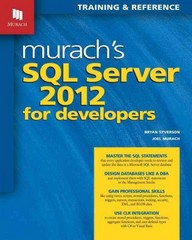Question
1) What are included in the address space of a process? Select all that applies: a) Program code b) Stack c) Registers d) Heap e)
1) What are included in the address space of a process? Select all that applies:
a) Program code
b) Stack
c) Registers
d) Heap
e) Global variables
2) How does a base-and-bounds dynamic memory relocation scheme achieve memory protection?
3) Given separated memory holes of 20KB, 100KB, 30KB, 120KB, and 50KB (in order), how would each of the following contiguous memory allocation policies place segments of 90KB, 40KB, 20KB, and 70KB of a process (in order). For next fit, we assume that the initial pointer is at 20KB.
a) 100KB -> 120KB -> 60KB (remaining of 100KB) -> Waiting
b) 20KB -> 100KB -> 50KB -> 120KB
c) 120KB -> 100KB -> 20KB -> 80KB (remaining of 120KB)
d) 20KB -> 100KB -> 60KB (remaining of 100KB) -> Waiting
e) 100KB -> 120KB -> 80KB (remaining of 120KB) -> Waiting
f) 100KB -> 50KB -> 20KB -> 120KB
g) 100KB -> 120KB -> 20KB -> 80KB (remaining of 120KB)
h) 120KB -> 100KB -> 80KB (remaining of 120KB) -> Waiting
First fit:
Next fit:
Best fit:
Worst fit:
4) A. Does paging have any internal fragmentation? If it does not, why? If it does, how can we reduce such fragmentation?
B. Does paging have any external fragmentation? If it does not, why? If it does, how can we reduce such fragmentation?
Step by Step Solution
There are 3 Steps involved in it
Step: 1

Get Instant Access to Expert-Tailored Solutions
See step-by-step solutions with expert insights and AI powered tools for academic success
Step: 2

Step: 3

Ace Your Homework with AI
Get the answers you need in no time with our AI-driven, step-by-step assistance
Get Started


